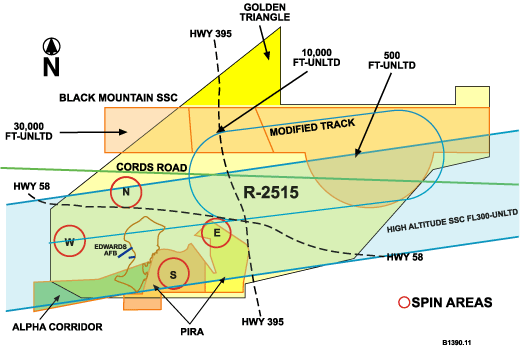|
||||||||||
|
|
||||||||||
|
||||||||||
|
|
||||||||||

Other special supersonic corridors exist througout the United States. Unlike the HASSC, most of these are not part of any Restricted Area, Prohibited Area or MOA (Military Operating Area). An example is a corridor in northeastern New York state near Saranac Lake. While the military controls access to and grants permission to fly supersonically through the HASSC, these other corridors are instead controlled by the FAA.
However, you do raise an interesting question when you correctly point out that a sonic boom created by an aircraft operating at high enough altitude cannot be heard on the ground. Since "controlled airspace" only extends up to 60,000 ft (18,305 m), any pilot flying above that level could conceivably fly as fast as he wanted without risking noise pollution. But how many planes do we have that can reach 60,000+ feet? Not many. The SR-71, F-15, and F-22 are about the only publicly-acknowledged supersonic aircraft that could operate that high, and the SR-71 had to get special permission to fly across-country supersonically.
Nonetheless, there are special circumstances that do allow pilots to exceed Mach 1 over populated areas. US pilots
are allowed to do so over South Korea due to the unique defense issues that nation faces. In addition, fighters
performing combat air patrols over the US as part of Operation Noble Eagle in the wake of the September 11
terrorist attacks have broken the sound barrier on occassion to catch up to airliners during air-rage incidents.
One such incident occurred over the suburbs of Chicago in October 2001 when two
F-16 fighters intercepted an American Airlines flight from LA to Chicago
after a passenger began threatening to crash the plane into the Sears Tower.
- answer by Jeff Scott, 6 January 2002
Read More Articles:


|
Aircraft | Design | Ask Us | Shop | Search |

|
|
| About Us | Contact Us | Copyright © 1997- | |||
|
|
|||